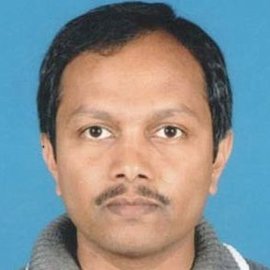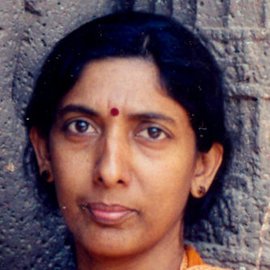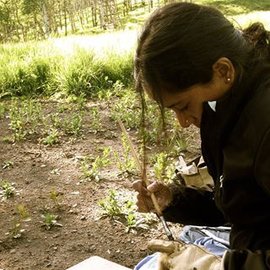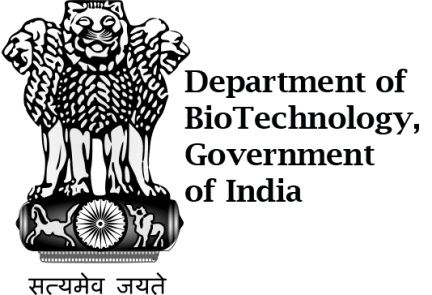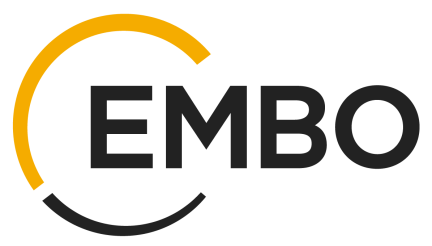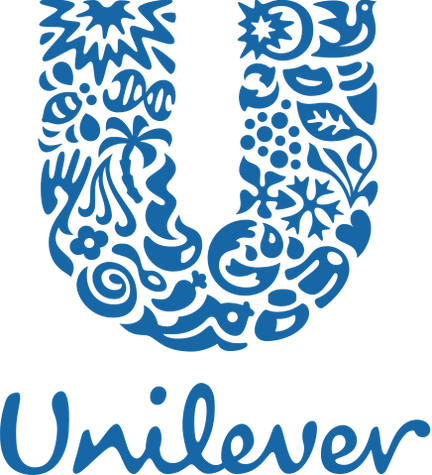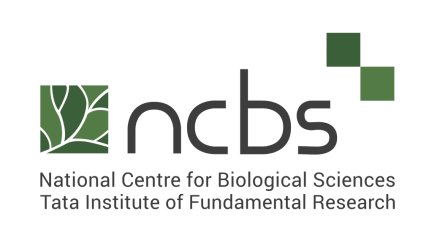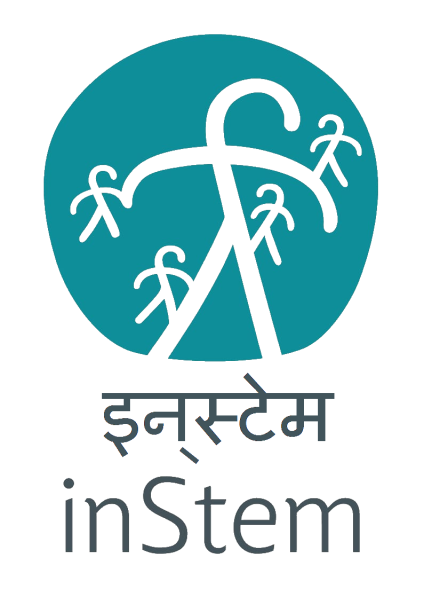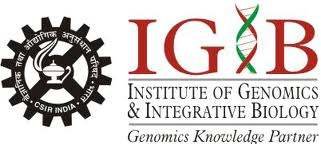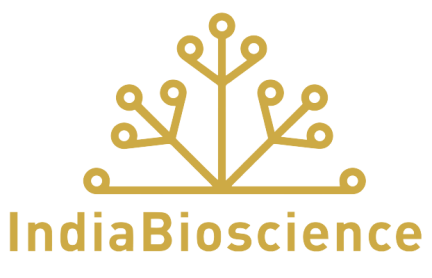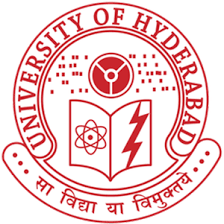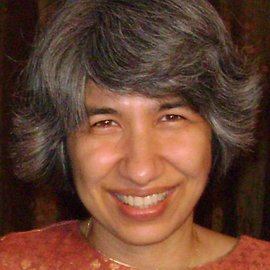
This meeting concluded on the evening of 12th February, 2014.

About
YIM 2014 was the sixth meeting of the YIM series that began in 2009. It was held in Ramoji Film City, Hyderabad, between 8 – 13 February, 2014. The Meeting began with the Postdoctoral Fellows’ Satellite Meeting on 8 – 9 February with an introduction by Satyajit Mayor from National Centre for Biological Sciences. The Young Investigators’ Meeting began on the evening of 9th February with an introduction by LS Shashidhara from IISER, Pune. K VijayRaghavan talked New opportunities for the Life Sciences in India in his keynote lecture. This was followed by a plenary lecture by KP Gopinathan, who spoke about his journey in his talk titles From the deadly Tuberculosis to the silky path of Biotechnology. The next day’s sessions turned the spotlight on Academia-Industry partnership in India. The poster sessions, panel discussions and talks by mentors, young investigators and postdocs that peppered the last two days of the Meeting served to catalyse interactions and intense discussions among the participants. Find out more from the Meeting’s live blog below.
Live blog
This is an account of YIM 2014 in Hotel Sitara, Ramoji Film City, Hyderabad as it unfolded. Aditi Bhattacharya (NYU), Deepti Chandraprakash, Nandini Rajamani Robin,Arnab Chakrabortyand the team blogged about the event.
DAY 1 — 09 Feb 2014 (Covered by Nandini, and Arnab)
1445hrs. (NR) — The YIM began with the Post-Doctoral Satellite Meeting post-lunch, and talks by Jitu Mayor, Ram Ramaswamy and Maddika Subba Reddy.
Jitu Mayor provided an overview of the life sciences in India ending with the message: “While India is impossible, doing life sciences in India is not!“
Ram Ramaswamy talked about Universities in India and the many many jobs waiting to be filled all over the country. He encouraged young people to look outside research institutions as Universities have much to offer.
Maddika SubbaReddy was candid about getting jobs in India: “The job talk is very important, and don’t be in too much of a hurry to accept an offer; think about this first and don’t shy away from negotiation.”
1605hrs. (AC) — A series of talks by Institute Directors, and representatives of Universitites and Institutions followed…
Murty Srinivasula was able to make a strong case for IISER Tvm, talking about the collaborative research there and the natural beauty of the campus that fosters intellectual activty. This sparked a trend almost, with other directors and representatives talking about the beauty of the surroundings of their respective campuses. Neeraj Jain of NBRC showed how work on science outreach and transparent lab-management were merits that should be ingrained. Everyone was able to highlight how research in India is now funded well, how focus is on collaboration, and that application oriented work is crucial.
1832hrs. (AC) — Shahid Jameel talks about Funding opportunities at Wellcome Trust/DBT: India Alliance. He focuses on the system that leads to a successful funding, discussing the numbers and the success rates. The schemes available to applicants at different levels of their academic careers is a portion that has everyone scribbling away furiously at their notepads.
A q&a session follows, to finish with informal introductions by all post-doctoral scholars present.
DAY 2 — 10 Feb 2014 (Covered by Nandini, andArnab)
0918hrs. (AC) — Day begins with a fantastic breakfast, in the course of which post-doctoral scholars put their posters up, and head in, to continue with the talks and presentations by Institute Directors, and representatives of Universitites and Institutions. (TBE)
1150hrs. (AC) — As lunch draws closer, the crowd at the posters-area thickens.. with directors and institutional representatives discussing research highlighted in the posters. Later, Vaishnavi would point-out, that even at the very end of the posters-area, she found directors and representatives enthusiastic and positive about work she showcased.
1510hrs. (AC) — Post lunch, the remaining talks and presentations by Institute Directors, and representatives of Universitites and Institutions draws to a close, to start with a Round Table discussion about available opportunitites. Questions on start-up funds, the ease of procurement, organizational hierarchy, system of disbursal, are meticulously discussed. (TBE)
The YI section of YIM2014 starts.
1653hrs. (AC) — There is a flurry of activity at the registration desk, young investigators arrive to hear Shashidhara introduce the Young Investigators’ Meeting, talking about the history of its inception, its purpose, and the grand-design for walk ahead. We then have Nandini talk about IndiaBioScience (that’s us!), introducing the team, talking about our core working areas, the vision, and our credo. Within her time, a round of introductions is squeezed in, and we hear about the organizing committee of YIM2014, and their interests, passions. Right about this time, we’re tweeting, about the publication of our facebook page (linked above): the reception is great, as . This makes way for:
1718hrs. (AC) — K VijayRaghavan talking about New opportunities for the Life Sciences in India, his keynote lecture beautifully threads the challenges and opportunities in India, with examples of big-data, and what Sidney Brenner said. The analogies he draws explicate what needs to be improved, like the speed of bureaucracy, the need to have transparency, the need to chase core scientific problems, the need to contribute to applications, and our dependence on technology affecting the quality and type of our output. His sharp comment is: “India has an uncanny ability to snatch defeat from the jaws of victory — that, we must change.”.
1918hrs. (NR) — KP Gopinathan, in his plenary lecture, speaks about his journey — starting off early in Tuberculosis research and ending in Bombyx mori in his talk From the deadly Tuberculosis to the silky path of Biotechnology. (TBE)
DAY 3 — 11 Feb 2014 (Covered by Aditi, Deepti, Nandini, andArnab)
Panel Discussion: Industry Academia Partnership (covered by Aditi)
11:54 (AB) — Discussion is on on what will it take to get Industry- Academia partnership going in India and what lessons can we learn from other models. The panel members include- Deepanwita Choudhury, Sanjay Singh, T.S Balaganesh, Ashok Venkitaraman, Jaya Tyagi, Harinder Singh, William Blach and Ramesh Sonti. The moderator is J. Gowrishankar. Deepanwita from IKP Knowledge Park urged researchers to start thinking of applications right from the time that experiments look interesting.
12.09 (AB) — Ramesh Sonti shares his experiences with the YIM audience about the willingness to work with industry. Not only that there has to stamina and respect given to industry. A mainstay of this session has been that academia needs to appreciate the pressures that industry face. Time is the most pressing of these.
12.30 (AB) — Jaya Tyagi from AIIMS speaks about her interactions with industry. It was important to her to face the health challenges to get start thinking in the more applied way. TB being her niche made a convenient start to her translational work.TB diagnostics is where she started. She found out early that translating basic science into usable tools requires persistance. Another thing was that picking the right industry partner is also very important. They need to have to stay consistent and have sufficient core competence to transform the idea.She next speaks about how to foster collaborations- it pays to have a interdisciplinary collaborative team from the get go and institutes need to develop tech transfer cells to promote interaction and expose both group.
12.35 (AB) — Harinder Singh talks about the blue sky projects. These are big questions in biology that need open ended committments on both the academia and industry side. These tie-ups should probably look at the BIG challenges like cancer, diabetes, mental illness.
12.49 (AB) — K. Gopinathan muses about the biotech manpower in India. Not only should reasearchers develop new ‘translatable’ ideas but also train sufficiently good manpower to help sustain the small and moderate sized biotech companies emerging now.
12.56 (AB) — Now starts the Q’n’A. In comes a question on ‘How open are industry to personalized medicine?’. Since the pay ‑off can’t be summed up together.Sanjay Singh replies that its very important. There are already niche markets for this and gives the example of Dendrion and why it failed. The limiting steps are cost per individual- hundreds of thousands as the price tag is rather high and the next is how to deliver it to the niche. It needs thought to develop a new business model.
13.05 (AB) — The panel now discusses the cost-benefit and risk management for a researcher in putting personnel, space and time to develop a translational idea. Harinder and Ashok dissect this and persistence again comes up. Ashok puts it succintly that “If you beleive in the idea and are passionate about it, if you won’t pursue it then who will?” William Balch feels that if one brings together basic and applied research together it is a victory in itself.
13.12 (AB) — This panel session draws to a close. Gowrishankar summarizes.….1) there is a strong convergence in views and ideas of how productive industry-academia partnerships can be fostered, 2) initial research needs to be protected, patented and then incubated for the next step that gap needs to be bridges by the lab or the institute itself , 3) there is a crying needs in Idnia of evaluating the poetential of some research, 4) one needs to develop a mindset in both sides to want to do collaborative research- open dialog and contacts need to increase and 5) both sides need to be cautious and consistent in their expectations and goals.
1550hrs. (AC) — Post lunch, YI posters are all set for a session, there is equal enthusiasm as on Day‑2.Rashna Bhandari talks about Starting an Academic Career in India; touching on the pragmatic aspects of lab-setup, and managements. Walking us through the starting years of her career, the problems faced — from procurement, to work-philosophy. Taking questions from the audience, we proceed into the breakout session on:
Breakout Session: Picking a research problem and setting up your lab.(Covered by Aditi, Deepti, andNandini)
Group1: (AB — participant) — Sitting in the cozy “Samrat” room, we had a lively discussion where some obvious and some controversial questions were discussed. Questions were shooting in all directions, answers were to the point and very insightful. The best take home came from Sandra Schmid on how to manage time. She drew a quick 2X2 matrix with the variables being urgent and important. So don’t let your to do list drift into the very urgent and very important territory …most of us have plenty of time and know our deadlines way beforehand, don’t worry too much about the not urgent and not important and manage your time between urgent and non-important (committees, chasing official matters) and important but not-urgent (like mentoring students ahead of a busy class schedule). YI shared their differing perspectives on the realities of working in the institutes vs university scenario and all re-visited their recruiting experience and team building with hilarious anecdotes.
Group2: |DC| — We remained at The Terrace Hall, with Kaustuv Sanyal, T S Balganesh, Manjula Reddy, Bindu Madhav Reddy, and Sandhya Vishweswaraiya mainly guiding the conversation. The session focused mainly on how collaborations speed up the research process in interdisciplinary sciences — for which Sandhya gave examples of her own lab. Kaustuv talked about the merits of a small lab-group, and the benefits of managing in small groups — giving an example of how when he (very ambitiously) hired a lot of students and technicians — and it turned out counterproductive. Both stressed on the importance of sharing lab-resources when funds are yet to arrive, or are tight. The conversation moved on to picking up research problems distinct from their prior (post-doctoral) work ..it was mentioned that one can pick something in the vicinity of prior work, but should avoid seeking the same. All the mentors summarized by stating that in India, lab-setup is easier because the government amply supports students and thus only equipments, reagents are what we spend on — which people actively share.
Group3: |NR|
1759hrs. (AC) — Zahid Kamal starts his talk on Mutational landscapes of a lipase under different evolutionary pressures. On the dot — 6:00 PM. He starts out displaying experimental work defining how enzymatic protein evolution is constrained by activity vs. stabililty for his model: lipase.
1830hrs. (AC) — He shows work with 18,000 clones where inverse correlation is seen throughout. For different sites and conformations, the strengths of correlation vary, but always exist. Further inquiry in-silico (with FoldX), show no match with experimental data — this, he argues is a good thing because we now know that the underlying mechanism of activity vs. stability is more complex than not. Work with his clones in selective slices of measurement shows how stability is easy to evolve but activity is drastically lost in most clones.. later, as Harinder Singh asks about relevance of this data in-vivo, Zahid counters that this can lead to further inquiry on that front, adding that his findings suggest that “activity” is the dominant factor guiding enzymatic protein evolution. He ends his talk on a light note, stating how being a minority (one of the two post-doctoral scholars here at YIM2014, based in India) makes him an example of the handicap theory of evolution.
1847hrs. (Ashuaq, CDFD) — Ramesh Sonti is speaking about plant innate-immune-response, and being an effcetive scientist in his brilliant talk, Finding the right mix between basic and applied research: Experiences of a plant bacteriologist.
He starts off with how his work is a mix between applied and basic research, describing the attributes of a pathogen in disease causation in plants. He briefly discusses how every plant cell can mount an immune response and talks about Xoo, the Xanthomonas plant pathogen (rice). His work was later translated into high-yield disease-resistant “Samba Mashuri” — a leading rice variety in Andhra Pradesh, India.
1900hrs. (Ashuaq, CDFD) — Ramesh next moves to talk about science as a career, telling us about how he developed an interest in botany — all due to his 9th grade teacher. This interest turned into a passion, and Ramesh asserts that passion is absolutely necessary in pursuing science. He discusses working in a lab, and makes a few (invaluable) suggestions…
ON WORK:
1. If you have knowledge gaps, seek collaborations and bridge the gaps.
2. Identify strengths; maximize opportunities.
3. Pick a niche area and grow in it, broaden it with colleagues.
4. Give collaborators the place they want (deserve) in the project. Let them feel that they’re actually working on it.
5. Noone will work unless they feel that they’re working for themselves.
ON MENTORING:
1. Treat students as your children/brother/sister/friend. Respect will automatically follow.
2. Take care of lab-members, your lab will automatically be taken care of.
3. Help them. With projects, presentations, thesis writing, posters. They’ll learn and pass the knowledge on.
Ramesh wraps up by telling us about how mentorship, teaching itself, and application of science are paramount to the very process of science. Questions on lab-management follow, as we move on to:
1917hrs. (AC) — Jaya Tyagi speaks about the start of her career, how she selected her research problem: Tuberculosis (TB) when the field was in its infancy still; her talk, TB Research: challenges and opportunities. Starting with the luck of having funds allocated to her by her senior, she worked on a ‘safe’ project ..and yet, this was only the beginning of her journey, trying next to find the virulent genes in M. tb — leading to the genomic library (a first) of the bacteria. This is where the interesting devR-devS component system was noticed. devR was implicated in adaptation of M. tb to hypoxia, and her plans changed to understanding the mechanism of devR function — hoping that would lead to tools for TB control strategies. They were able to find the entire signalling cascade for devR and then find ways to intercept the signalling cascade and develop an inhibitor for it — with collaboration from chemical dynamics in-silico. Experiments then showed that at least one compound had sterilizing effect on dormant M. tb. She acknowledges that the mechanism of this, is still an open question — but her work has provided proof of concept.
1938hrs. (AC) — Jaya continues with the challenge of TB diagnostics — done still with a 130yrs. old microscopic test. Her team developed a process, called USP — which used her prior work and translated to clinical practice, validating it, patenting it, publishing and moving towards developing technology. The dissapointment was that it wasn’t accepted as a replacement of the existing method. This only led her to go back to the board, adding “It’s okay to fail!”.. and that her work is in progress. She closes with thanks to her team, collaborators and supporters.. leading to questions from the audience on why, despite excellent work, USP wasn’t selected as the method of choice. To this, Jaya explains how the process of translation is nuanced and that scientists need to work with administration, and policy-makers, and most essentially — have great collaborations, to pitch for success.

Venue
Hyderabad, the capital of Andhra Pradesh, became historically prominent under the patronage of the Nizams as a pearl and diamond trading center and hence earned itself the moniker ‘Pearl City’. Established in the late 16th century, this 400 year old metropolis boasts a rich historical and cultural heritage and was placed 19th in the New York Times list of ‘41 Places to Go’ in 2011. Ramoji Film City is certified by the Guinness Records as the largest Film Studio in the world. Sprawling over 1666 acres, it is a popular tourist destination with many attractions such as Hawa Mahal, the Hollywood sign and the various world-class studio settings which realistically capture different times, regions and empires.
The venue of the meeting, Hotel Sitara, is situated within the Film City and epitomizes luxury with fully-equipped state of the art facilities. Being held as it is in a city that boasts the presence of Genome Valley and the title “India’s Pharmaceutical Capital”, and also rich heritage sites such as the Charminar and the Golkonda Fort, YIM 2014 promises to be a feast of the best of Indian Science and Culture.
Hyderabad has an International Airport (Rajiv Gandhi) and is also well connected by road and rail. YIM will provide local transport to Ramoji Film City using shuttles which will ply at fixed times. The timings and shuttle pick-up points will be added to the schedule a few weeks before the meeting date. Ramoji Film City is also well-connected by a steady stream of public and private buses and can be reached through a forty-minute drive from the airport.
http://www.ramojifilmcity.com/hotels/sitara.php
